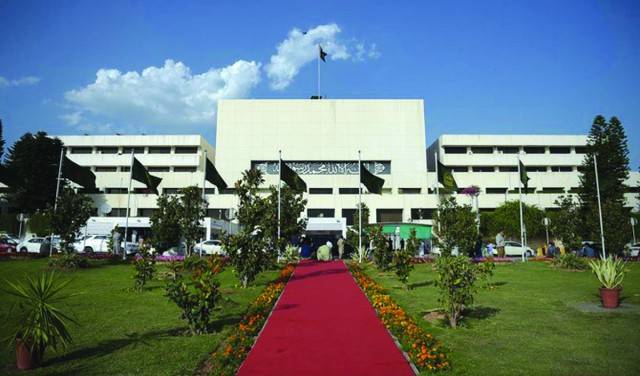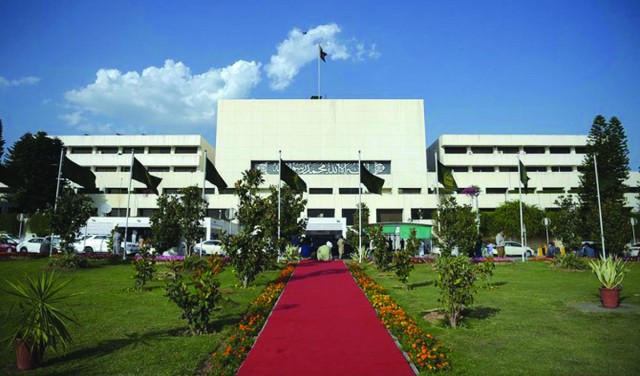
The recent spate of targeted killings in the tribal districts of Khyber Pakhtunkhwa, the treatment meted out to Ali Wazir - an elected representative from the area - over the past few weeks and the sledgehammer tactics being deployed against minority communities indicate that we have learned nothing from history. Such actions are fueling anger, alienating not only the Pakhtuns but other smaller units of this federation. The ramifications of this approach of using coercive state apparatus could be catastrophic if sanity and prudence does not prevail.
One may see the Pakhtun Tahaffuz Movement as an ethnic entity fighting for the rights of a particular community, but in reality, its approach to political issues is federal in nature. Leaders of the movement have been demanding their rights within the framework of Pakistani Constitution. They have been allying with democratic forces of the country and have endorsed their slogans of civilian supremacy and rule of law. They have rejected calls from disgruntled elements within the Pakhtun society to adopt harder stances and have remained peaceful in their protest.
It is unfortunate that all mainstream political parties have been weakened, undermined or eliminated under a calculated policy seeking dominance of a particular institution of the state. In the aftermath of the Partition, it was the Communist Party of Pakistan that was a symbol of great national unity with the people of all ethnicities, sects and religions taking part in its struggle aimed at emancipating the working class masses. It was banned after the famous Rawalpindi Conspiracy Case to appease the lords of capital. The attempt by the Pakistani ruling elite to prove that the newly-created state could work as a bulwark against the onslaught of red revolution failed to yield any substantial financial results, but it dealt a devastating blow to national unity, besides contributing to the destruction of the social fabric of the Pakistan society in the long term.

The National Awami Party emerged as another entity that could have forged national unity. Its leadership reflected the representation of all ethnic and religious entities but the powers-that-be decided that this formation was not acceptable either. First, the general elections were postponed in the 1950s when it became evident that the party could sweep the polls, and in the 1970s, the party was banned altogether. So, a party that could have strengthened the federation was outlawed. This ban triggered excitement among those who thought they had demolished a powerful political fort of the enemy but they forgot that this action would alienate the peripheries and would stoke anti-federation feelings.
The ban on the NAP triggered the third insurgency in Balochistan, besides fanning anti-federation sentiments in the erstwhile NWFP. The state, instead of allaying the apprehensions of nationalist forces, resorted to brutal force and sowed the seeds of deep-seated resentment that is still challenging the federation today. Those who used ZA Bhutto to undermine NAP also orchestrated a coup against him and sent the first elected prime minister of the country to the gallows. This spelt disaster for the country that not only plunged into a dark era of dictatorship, but also witnessed the rise of religious extremism, the ascent of monstrous sectarian forces, the mushrooming of drugs dens and dominance of obscurantist elements. It also alienated the second largest ethnic entity of Pakistan in Sindh, where Sindhi nationalists refused to trust anyone talking about national unity and the integrity of the federation.
With the restoration of democracy in 1986, effectively in 1988, it was hoped that the tide of divisiveness could be controlled, but the support of anti-democracy elements for sectarian groups, ethnic fascists and rigid elements remained unabated. Sufi Muhammad in Malakand, ethnic parties in Sindh and sectarian warriors in the Punjab were encouraged to challenge the writ of state from 1988 to 1998 with an aim to weaken mainstream political parties. The process of undermining federalist parties was expedited during the dictatorial rule of General Musharraf, who more or less defanged the N league and PPP by first forcing their leaderships to go into exile and later coercing the parliamentarians of the two parties into forming various blocs.
Such marginalization of political organizations led to the rise of extremist forces that captured parts of KP and turned the tribal areas into a global hub of extremism. This policy of targeting politicians boomeranged on those who had a deep contempt for parliament and the civilian supremacy. Their imprudent policy of ousting politicians from public life and then assassinating Nawab Akbar Bugti, a symbol of federation in the troubled region of the country, dealt a devastating blow to the Pakistani federation. The country is still grappling with the catastrophic ramifications that this murder triggered.
Powerful elements have also undermined the Balochistan National Party and later National Party of the largest province of the country. The people of the country’s federating units seem to be in the grip of sectarian forces and unscrupulous tribal lords backed by powerful elements of the state on the one hand and Baloch insurgents on the other.
As if discontent was not enough in Balochistan, we see alienated sections of Pakhtun society through our reckless policies. It is time that we made efforts to heal the wounds of smaller nationalities, allowing space for those that talk about their rights within the domain of Pakistani constitution. Undermining nationalist forces that respect the Pakistani federation would be counterproductive. Putting an end to conspiracies against mainstream political parties that talk about confining all institutions to their constitutional roles and engaging genuine political forces in peripheries could be one of the ways to thwart any possible damage to the Pakistani federation.
The author is a freelance journalist and researcher
One may see the Pakhtun Tahaffuz Movement as an ethnic entity fighting for the rights of a particular community, but in reality, its approach to political issues is federal in nature. Leaders of the movement have been demanding their rights within the framework of Pakistani Constitution. They have been allying with democratic forces of the country and have endorsed their slogans of civilian supremacy and rule of law. They have rejected calls from disgruntled elements within the Pakhtun society to adopt harder stances and have remained peaceful in their protest.
It is unfortunate that all mainstream political parties have been weakened, undermined or eliminated under a calculated policy seeking dominance of a particular institution of the state. In the aftermath of the Partition, it was the Communist Party of Pakistan that was a symbol of great national unity with the people of all ethnicities, sects and religions taking part in its struggle aimed at emancipating the working class masses. It was banned after the famous Rawalpindi Conspiracy Case to appease the lords of capital. The attempt by the Pakistani ruling elite to prove that the newly-created state could work as a bulwark against the onslaught of red revolution failed to yield any substantial financial results, but it dealt a devastating blow to national unity, besides contributing to the destruction of the social fabric of the Pakistan society in the long term.

The National Awami Party emerged as another entity that could have forged national unity. Its leadership reflected the representation of all ethnic and religious entities but the powers-that-be decided that this formation was not acceptable either. First, the general elections were postponed in the 1950s when it became evident that the party could sweep the polls, and in the 1970s, the party was banned altogether. So, a party that could have strengthened the federation was outlawed. This ban triggered excitement among those who thought they had demolished a powerful political fort of the enemy but they forgot that this action would alienate the peripheries and would stoke anti-federation feelings.
The ban on the NAP triggered the third insurgency in Balochistan, besides fanning anti-federation sentiments in the erstwhile NWFP. The state, instead of allaying the apprehensions of nationalist forces, resorted to brutal force and sowed the seeds of deep-seated resentment that is still challenging the federation today. Those who used ZA Bhutto to undermine NAP also orchestrated a coup against him and sent the first elected prime minister of the country to the gallows. This spelt disaster for the country that not only plunged into a dark era of dictatorship, but also witnessed the rise of religious extremism, the ascent of monstrous sectarian forces, the mushrooming of drugs dens and dominance of obscurantist elements. It also alienated the second largest ethnic entity of Pakistan in Sindh, where Sindhi nationalists refused to trust anyone talking about national unity and the integrity of the federation.
With the restoration of democracy in 1986, effectively in 1988, it was hoped that the tide of divisiveness could be controlled, but the support of anti-democracy elements for sectarian groups, ethnic fascists and rigid elements remained unabated. Sufi Muhammad in Malakand, ethnic parties in Sindh and sectarian warriors in the Punjab were encouraged to challenge the writ of state from 1988 to 1998 with an aim to weaken mainstream political parties. The process of undermining federalist parties was expedited during the dictatorial rule of General Musharraf, who more or less defanged the N league and PPP by first forcing their leaderships to go into exile and later coercing the parliamentarians of the two parties into forming various blocs.
Such marginalization of political organizations led to the rise of extremist forces that captured parts of KP and turned the tribal areas into a global hub of extremism. This policy of targeting politicians boomeranged on those who had a deep contempt for parliament and the civilian supremacy. Their imprudent policy of ousting politicians from public life and then assassinating Nawab Akbar Bugti, a symbol of federation in the troubled region of the country, dealt a devastating blow to the Pakistani federation. The country is still grappling with the catastrophic ramifications that this murder triggered.
Powerful elements have also undermined the Balochistan National Party and later National Party of the largest province of the country. The people of the country’s federating units seem to be in the grip of sectarian forces and unscrupulous tribal lords backed by powerful elements of the state on the one hand and Baloch insurgents on the other.
As if discontent was not enough in Balochistan, we see alienated sections of Pakhtun society through our reckless policies. It is time that we made efforts to heal the wounds of smaller nationalities, allowing space for those that talk about their rights within the domain of Pakistani constitution. Undermining nationalist forces that respect the Pakistani federation would be counterproductive. Putting an end to conspiracies against mainstream political parties that talk about confining all institutions to their constitutional roles and engaging genuine political forces in peripheries could be one of the ways to thwart any possible damage to the Pakistani federation.
The author is a freelance journalist and researcher

